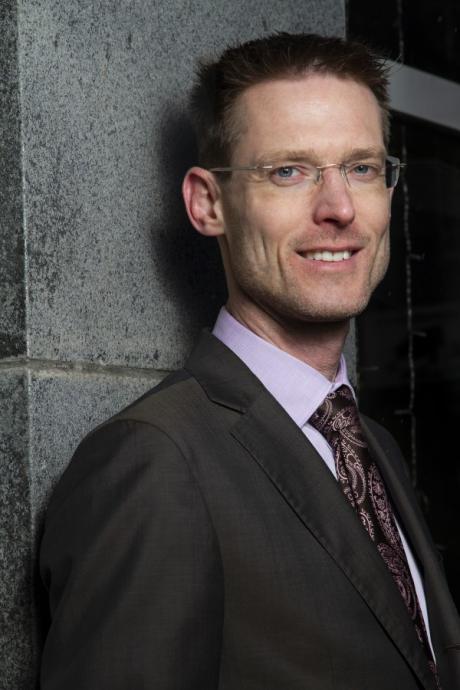

Guest Viewpoint: Manuel Adamini, Sean Flannery, Toby Heaps and Eloy Lindeijer
Companies need to demonstrate that they understand: what a transition to a lower carbon business model may look like.

Manuel Adamini MSc.
Klimaatverandering: de grootste investeringskans ooit“Time to invite brown corporates to the green bond party”
The green bonds market has grown from nothing to about $500bn (€443bn) outstanding in just a decade. Hundreds of issuers have offered thousands of deals now coming from about 50 countries. This is a global phenomenon.
Still, we do not have reason to celebrate. Large swathes of the northern hemisphere and the US burned last summer; at one point six heavy storms raged across the globe; and Australia is getting ever hotter and dryer as well as suffering from flooding. Extreme weather events is what a warmer world brings. We need to urgently finance and deploy measures to mitigate emissions and to adapt to climate impacts already in the system. The speed and scale required, as also stressed by the latest report from the Intergovernmental Panel on Climate Change (IPCC), are daunting. We are facing a climate finance gap of roughly $2.5trn per year.
Scaling up the green bonds market from billions to trillions is a challenge in itself. As we can only admit verifiably climate-relevant projects and assets, it becomes even harder. The issuance we have seen so far is dominated by top-rated government-related entities, energy utilities and real estate and financial corporates. Use of proceeds has been largely geared at green buildings, renewable energy, and energy efficiency. Given the carbon intensity of energy production and the property sector, this is not bad. But it is neither a reflection of the real economy nor of mainstream investment benchmarks.
Repeat issuers lament the scarcity of projects. Investors complain about lack of supply of bonds. We need to activate those segments of the market that have largely been absent but offer huge emissions reductions potential.
”Within the corporate sector, a plethora of initiatives provide pointers to relevant sectors and companies.”
It is easy to do some mapping. Prominent think tanks and academics tell us to focus on industrial efficiency, fuel-switching, and electric vehicles (EVs) on the demand side, and on fossil-fuel phase out on the supply side. Within the corporate sector, a plethora of initiatives provide pointers to relevant sectors and companies. Committed ESG-based investors facing diversification or yield issues call for more (and often lower rated) corporate issuance overall. They are desperate to see green paper from basic industrials and from private transport companies.
Squaring all this with existing issuance quickly points at sectors such as cement and concrete, metals and mining, oil and gas (including biofuels), petrochemicals; and aviation, cars and trucks, as well as shipping. This does not sound particularly green – and that is exactly the point.
Most of these sectors are polluting for now. Most of them are here to stay. And most of them still have massive efficiency gains to be made, either within a business-as-usual scenario or by working on technological breakthroughs or radical operational changes. Others face ESG-controversies, but will be central to facilitating low carbon technologies. Metals and mining are key to solar panels, wind turbines, batteries for EVs and for electrical grids integrating more renewable energy. Oil and gas firms and refiners need to provide biofuels to aviation and heavy transport.
”We have to carefully set gatekeepers when admitting brownish sectors to the green game.”
Some players may emerge as game changers within their industries. Others might be behemoths offering stable balance sheets to cross-subsidise for low-cost capital for green. We can spend every dollar only once. Given runaway climate change, we cannot afford wrong investments, locking us into future emissions. We have to carefully set gatekeepers when admitting brownish sectors to the green game.
We want to see issuers committed to strategic change: green intentions turning into tangible and verifiably climate-relevant measures that relate to companies’ core business activities. Green capital expenditure compared to traditional capex may be small for a start. However, it should be a credible indicator of more to come: a reorientation towards a 2°C – or rather 1.5°C – global warming pathway.
So how can prospective issuers make sure they are credible? According to the Financial Stability Board Task Force on Climate-related Financial Disclosures (TCFD) framework, companies need to provide evidence to investors as to how they intend to manage anticipated financial impacts of climate-related risks and opportunities on their cash flows, and from there on to income statements and balance sheets.
Companies need to demonstrate that they understand: what a transition to a lower carbon business model may look like; what key mitigation and adaptation issues have to be addressed; what strategies need to be developed in response; what governance frameworks (including senior management capabilities and incentives) need to be put in place; what capital expenditure is necessary; and what funding is to be attracted to deploy such capital expenditure. Only then should one focus on what role green bonds play within that funding mix. Credible green bonds are a means to supporting the journey from brown into green – never an end in themselves.
”The financial sector, led by investors, needs to work constructively with the largest corporate emitters to build a financial marketplace”
A deal-flow-focused debate around brown-to-green transitions has not been held in the market. But we need it so badly. Without it we risk simply enjoying the good vibes of bringing relatively clean issuers to market – while dubious on climate impacts. The financial sector, led by investors, needs to work constructively with the largest corporate emitters to build a financial marketplace that acts as a catalyst to greening our real economies.
So let’s invite the brown corporates to the party. They will have to be ready, though, to be rigorously checked at the entrance door. If they really do mean green business, dancing could be fun – for all involved. And it would surely matter.
Manuel Adamini is head of investor engagement at the Climate Bonds Initiative. Sean Flannery is a senior adviser to NGOs and multilateral development banks, as well as a former CIO of SSGA. Toby Heaps is co-founder and chief executive officer of Corporate Knights. Eloy Lindeijer is a member of the executive committee, chief investment management, at the Dutch pension fund service provider PGGM. They are all writing in a personal capacity.
Source: Pensioenpro

Manuel Adamini MSc.
Klimaatverandering: de grootste investeringskans ooitManuel is een internationaal erkend expert op het vlak van klimaatfinanciering. Hij heeft gedegen...
Offerte opvragen Bekijk het profiel